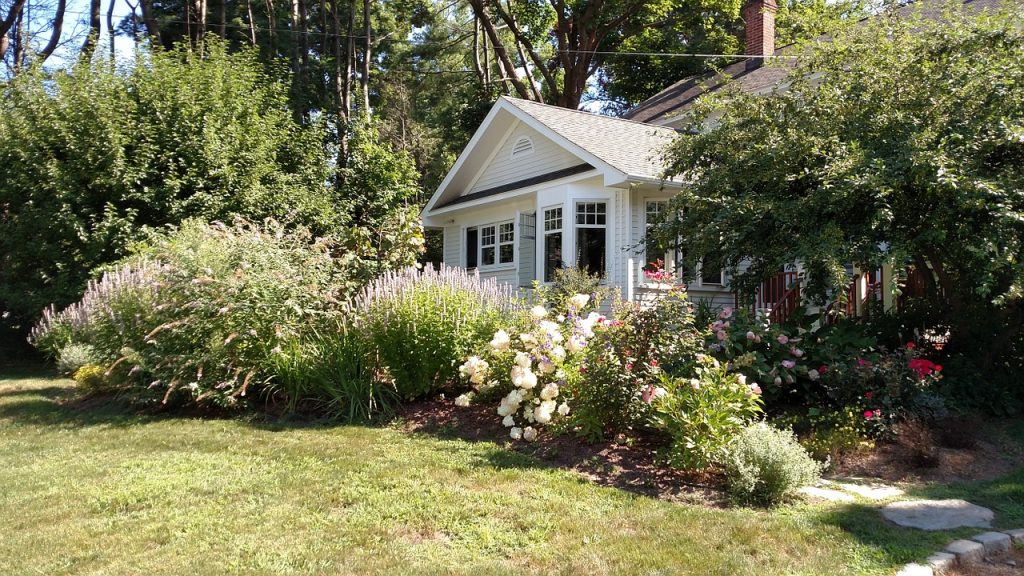This is a question I often receive from students in my Landscape Design and Construction courses: “Should I provide a warranty for the plant material on the project I just completed?”. Typically these students have just started trying to get clients for their new landscape business and are navigating the muddy waters of contractor liability.
In this article, I will review three common strategies for handling plant warranties in a contract and provide examples that can be used for your next contract. This article also presumes that the landscape designer is also handling the installation of the project.
If a designer were subcontracting the work, or simply providing the client with the contact information of installation companies, a plant warranty would not be relevant. For more information on the topic of the design/build business organization, be sure to read the upcoming article: “Can You Make Sufficient Income Only Doing Landscape Design Work?”
First, to answer the question in short – should you warranty plant material. Yes, it is likely that for most projects a warranty is appropriate. Unless extenuating circumstances exist (which I will also review) a lack of any type of plant warranty would indicate to the client that you had little faith in the longevity of the design or your ability to select proper plants.
So, now that we know the answer is yes, the more important question is how. The answer to this question is much more detailed. Here are three strategies that have worked and are easy to implement for most projects.
Strategy #1: The Conditional Contract Statement
Most residential clients and some commercial ones do not have an adequate understanding of the level of work required to maintain plants within their first season. Even when designs specify larger well-established plants, proper irrigation, weeding, and pruning is still necessary.
The first strategy for providing a warranty for the plant material is through adding a qualifying statement into the project contract which states that plants will be warrantied for a specified time period (let’s say two years) if certain conditions are met. The conditional statements are an “if this, then that” statement in which the that is the plant warranty.
I have seen these conditional statements written in several ways. A common technique is requiring the purchase and installation of an irrigation system to be utilized during the establishment period at the owner’s expense. This would require owners to financially commit to the long-term health of their landscape.
A conditional statement within a contract can be appropriate in most cases, but the designer needs to be careful not to go conditionally-crazy by requiring too many additional installations or services associated with the warranty. Typically, the installation of a timed-irrigation system along with your project should fit most applications.
There are multiple resources available which provide templates for contract development and client invoicing. In order to add plant warranty information, the contractor should make sure they have the ability to edit and customize the templates. Two popular softwares, which have consistently good reviews can be found here and here.
Strategy #2: Calculating Risk Into Your Budget
The second strategy of warrantying plants is to “price-in” or calculate the expected loss of plants for a particular project. Typically this is done with an assumed loss of 5-20% and requires the designer to conduct a thorough evaluation of the site. Key areas to include in a review are soil structure and type, soil-nutrient availability, site drainage conditions, sun patterns, and wind exposure. Additional areas of analysis should be site-specific and related to the particular project being completed.
If the designer finds that the site may be a difficult one for a particular plant, he/she would price-in a 20% expected loss. However, if the site and soil conditions are accommodating and the designer sees no problem in the plants thriving in this environment, then he/she might only price-in a 5% expected loss.
Let’s take a look at both examples:
Example A: Expected Loss of 20% (20 plants for every 100 planted)
| Price of Plant Unit to Consumer | $200.00 |
| 20% Warranty Mark-Up | $40.00 |
| New Price To Consumer Under Warranty | $240.00 |
Example B: Expected Loss of 5% (5 plants for every 100 planted)
| Price of Plant Unit to Consumer | $200.00 |
| 5% Warranty Mark-Up | $10.00 |
| New Price To Consumer Under Warranty | $210.00 |
The new warranty price would be calculated after the initial markup from wholesale cost to the contractor.
The advantage of this warranty strategy is that it is not provisional. The designer or contractor can calculate and bill the warranty insurance to the client without the consumer seeing the actual markup. It is all included in the overall price of the plant. Then, the designer can offer a plant warranty that is automatically in effect with no commitment on behalf of the consumer.
This strategy is not without problems though. The actual loss of plant material may be more than the expected loss which was priced into the contract. In these cases, the contractor would lose money when the client exercised the warranty option of the contract. So long as an experienced designer or contractor was reasonable in their warranty markup, this should rarely be an issue. Personally, I have only seen a handful of cases with over 20% plant loss – and these occasions were during municipal water-use restrictions where irrigation was prohibited.
Strategy #3: The Maintenance Contract
A standard method for negotiating a warranty for plant material in a project can be through an added maintenance contract. In this situation, the contractor would provide a warranty for plant material if the consumer also hired them to complete maintenance services for the site which would include caring for the newly installed plants.
The advantages of this strategy are its simplicity and capital appropriation. The maintenance division of the company would not need to market their services as aggressively for new clients because the design/build division would be finding and referring the future work through the warranty contracts.
According to an article from Landscape Management, this is a preferred strategy:
“Jody Shilan, a landscape designer and consultant with 20 years of contracting/design experience, says the best way to avoid plant warranty issues—and at the same time retain customers and sell new work—is to offer a maintenance agreement after an installation job….During the walk-through after the job is completed, Shilan says to always be prepared to offer a homeowner a maintenance contract along with a one-year warranty.” Landscape Management, 2014: How to Approach Plant Warranties
Landscape designers that do not engage in maintenance contracts might think they are missing out on this possible revenue stream; however, that is not the case. I have seen various sole-proprietor designers utilize referral contracts in their services for design clients.
The way this works is through a professional agreement between a landscaping company (maintenance-only) and the landscape designer (design/build only). The designer would refer future work to the maintenance company and receive a referral fee if the customer hired the landscape services company.
The designer would only warranty the plant material to the customer if they agreed to hire the maintenance services of the recommended contractor. The client would have a direct contract with the landscape services company so that the designer was not subcontracting the work directly.
The advantage of a designer engaging in this referral-type approach is that he/she can work with several landscaping companies simultaneously. By having partnerships with multiple maintenance companies, it ensures that the client will have the availability of work to be completed in a timely fashion.
A Note On A Short-Term Warranty
From a horticultural perspective, I would not advise writing short-term warranties into the contract (i.e. 30-day warranties). Most issues that would result in plant damage or death within the first 30 days are likely caused by the contractor (incorrect planting depth, rough handling before planting, or unnoticed mechanical damage).
Offering a short-term warranty indicates to the consumer that you have little confidence in the design and installation of the project. Both personally and professionally, I have found that a contractor that refuses to fix issues within a short time after project completion will rarely be re-hired or referred to others.
For more information on topics related topics, please check out our Landscape Business and Design Resources sections.
___________________________________
Important Legal Disclaimer: This site owned and operated by Draftscapes. We are a participant in affiliate marketing programs designed to provide a means for sites to earn advertising fees by linking to participating vendors. Affiliations include Utrecht Art Supply and Amazon Associates. Draftscapes is compensated for referring traffic and business to these companies. Recommendations for products or services on this site are not influenced through this affiliation.


